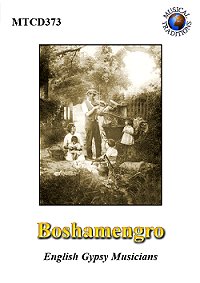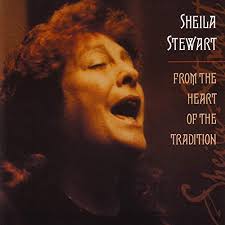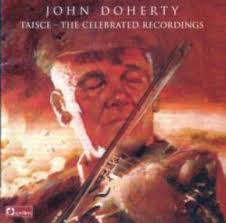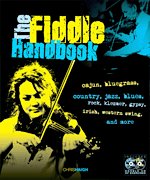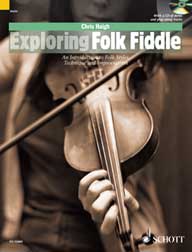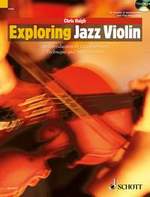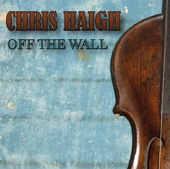
MENU TO FIDDLE STYLES:
Gypsy musicians in the British Isles
Eastern Europe is famous for the range and quality of its gypsy musicians. Whether we look at Russia, Hungary or the Balkans, gypsies have played, and continue to play a huge role in the creation and maintenance of musical tradition. Can we say the same about the gypsies of England, Ireland, Scotland and Wales? Gypsies certainly feature strongly in the text of many folk songs, and are frequently referenced in literature. In this article I will attempt to answer a number of questions. Firstly, who are the gypsies of the British Isles? Are they the same people as those who have so dominated east European traditional music? What has been their role and contribution in our islands? Is there such a thing as a gypsy repertoire or style of performance? And finally what is their position in the present day folk scene?
Who are the gypsies? This straightforward question unfortunately doesn’t have a simple answer, and it is one loaded with considerable political sensitivity. Broadly speaking, there are three groups of people involved. Firstly, there are Romany gypsies or Romanichals. Genetic and linguistic studies have shown that this group migrated westward from Rajesthan in northern India, starting in the 11thC. They are not a single cohesive racial group, but seem to be rather selected by their trades or professions. They arrived in the British Isles in the early 16thC- the first historical references to them being 1505 in Scotland, and 1512 in England. Since their first arrival they have remained on the fringes of society, surviving on casual agricultural work, working as tinsmiths, basket weavers, horse traders, and of course musicians. Because they did not settle down or integrate, they have been subject to constant suspicion and persecution.
The second group to be considered are the Roma. These come from the same north Indian origin, but from a later period of migration. This group did not get as far as western Europe, but largely remained in eastern Europe, where many were enslaved until the gradual dissolution of the Ottoman empire. This group have maintained a dark skin and distinctive facial features, and are largely responsible for what is loosely considered the “gypsy music” of such countries as Hungary and Romania. Roma have not appeared in the British Isles in any significant numbers until very recently.
Thirdly, we have the Travellers. They have often been referred to as gypsies because their trades and nomadic lifestyles, and position on the edge of society are very similar to the Romanies. However, genetically they originate in Ireland and to a lesser extent Scotland. The first reference to them occurs in the 12thC, but they were displaced by a series of events largely related to the breakdown of the social order caused by incursions of first the Normans and then the English. Travellers are often referred to as Tinkers, a name relating to the craft of tinsmithing, and they often refer to themselves as Pavee.
In England and Wales, most gypsies are Romany. In Scotland, there is a mixture of Romany and Travellers, whilst in Ireland, most are Travellers
English Gypsy Fiddlers
Romany gypsies in England, until the 19thC, spoke the Romani language, but this has been gradually replaced by English, and a Romani-English patois. As already mentioned, they carried out a number of different occupations, among which was music. They would perform in a casual way at weddings, fairs, harvest suppers, horse races and public houses. Fiddle was one of their favourite instruments, and Boshamengro was Anglo-Romani for ‘fiddle player”. Many accounts of gypsy musicians come from 19thC “gypsyologists”- English gentlemen caught up by romantic notions of the purity and nobility of gypsy life. An account by Smart and Crofton in 1875 gushes that…
“The Gypsy is always foremost among the ‘feast-finding minstrels’ which attend our English fairs and country wakes. He is to be seen in his glory at a 'kelopen’ or frolic, when the mirth grows fast and furious, as with flashing eyes and excited mien he flourishes his fiddle-bow and plays the music which keeps in time the flying feet of the dancers…”
They refer in particular to a fiddler by the name of Horsery Grey;
“We have been told by a Romani… that when Horsery had heard a tune he could play it off straightway, putting in such variations, grace-notes, shakes and run’, that none of his confreres could compare with him. He played entirely by ear, and not from notes. The gaujo (non-gypsies) sent for him from long distances to hear his hornpipes”
It is important to understand that there was frequent interaction between gypsy and gaujo musicians. The 19thC poet John Clare, for example, who was a keen amateur fiddle player, sought out gypsies near his Northamptonshire home in order to learn music from them;
“… I used to spend my Sundays & summer evenings among them learning to play the fiddle in their manner by the ear and joining in their pastimes.”
The celebrated English fiddler Stephen Baldwin, from the Forest of Dean was a friend of the gypsy fiddler Tite Smith; both played for the local morris dancers, and on one occasion Baldwin was employed to play at a gypsy wedding:
“As soon as bow touched strings the gipsy blood was stirred and they were dancing with great vigour. “I never saw so much food and drink”, he said. “There was meat and cheese, beer, and whisky, all in huge quantities. … I played nothing but hornpipes. The sweat simply rolled off them. They never seemed to get tired. … it was about two in the morning when I left.”
Stephen Baldwin
Both Vaughan Williams and Cecil Sharp collected tunes from gypsies. The former, from example, from the Norfolk fiddler Stephen Pole, in 1905, and the latter from Hertfordshire gypsy John Locke. Sharp was more interested in songs than tunes, and was excited to discover from Rebecca Holland in Devon a song “fiendishly difficult to take down”, and apparently in a mode of Indian origin. The absence of any other examples of this mode in British Romany music suggests that this may have been more wishful thinking that any actual musical evidence of Indian roots.
English gypsies played and sang music in a number of different contexts. There is no doubt that they played and sang in the privacy of their own company, both for enjoyment, and, in the absence of literacy, a means of maintaining and passing on their culture. They used music as a way of supplementing their income, alongside other trades and occupations, while for some, probably a minority, it was a profession in itself. There was a band by the name of the “Epping Forest Gypsies” who in the 1860’s toured the country, opening their mobile camp to visitors and playing for balls. In Hertfordshire a fiddler named Gypsy Draper made a living playing at harvest suppers, weddings and public houses, much to the disapproval of the Hitchin Quakers, who considered his music “almost as dangerous as gunpowder” and who attempted to get him moved on wherever possible.
One of the best sources of information and actual recordings of English gypsy fiddlers is the CD “Boshamengro- Traditional music recorded from Romany fiddlers and other musicians in Southern England 1910 – 2006”. This includes 45 tracks, including some by the fiddler Harry Lee. Lee was a professional busker, descended from a long line of fiddlers. His playing is of a high standard, highly decorated and inventive, and his repertoire typical of any fiddler from the 19th or early 20thC.
Welsh Gypsy Fiddlers
The first record of gypsies in Wales (sometimes known as Kale) is from 1579, a couple of generations later than England and Scotland. Abram Woods and his family arrived in the 17thC, and they established a dynasty of noted musicians. Abram is said to have been the first man to play the fiddle in Wales, but it is typical of gypsies that they rapidly adapt to their musical surroundings, and his clan were soon noted for the quality of their harp playing. They quickly became accepted and welcomed for their musical contribution to Welsh society, such that it was written in the Liverpool Mercury in 1896;
“In Wales, just as in Hungary and Russia, this gifted race have become the best interpreters of the national music of their adopted country. Both on the old triple harp and its modern rival, the pedal harp, they seem to me to excel by infusing into Celtic music something of the spirit of magic which is commonly attributed to their race”
As we saw in England, the Welsh gypsies played the same repertoire as their gaujo counterparts, but with an added flair. Ernest Roberts wrote in 1981, describing the Welsh gypsy style of harp playing as;
“essentially emotional, rhythmical and melodious and to achieve it they frequently resorted to improvisation … bringing to it a personal involvement and panache” While an “inventive and spontaneous style characterised their violin playing”.
One particular contribution of the gypsies to Welsh music was that they maintained the Welsh folk tradition through the times of Methodist prohibition in the 18th and 19thC, when much of the population gave up on secular music. Sadly there seems to be a general consensus that there are no longer any gypsy musicians active in Wales today.
Scottish Gypsy Musicians
In Scotland, gypsies arrived with first wave in the early 16th, but their numbers have been swelled by Travellers from northern Ireland, and by people displaced from the land by the Highland clearances in the 18th and 19thC. As in England, gypsies were subject to many periods of active persecution. There is a famous story of the gypsy fiddler James MacPherson who , in 1700, was arrested in Banff for sheep rustling. The law at the time allowed gypsies to be hung without trial. Having been informed that a reprieve was on its way, the local sheriff set the town clock forward to ensure the execution went ahead. At the gallows MacPherson played on his fiddle and sang a lament he had composed in the cell. The song was later re-written by Robert Burns, including the words;
“…O, there’s some come here to see me hung And some to buy my fiddle, Before I would pairt wi’ her I’d brak her through the middle. I took my fiddle in both my hands And broke her ower a stone; There’s nae anither will play on thee When I am dead and gone…”
As is common with gypsy families, musical dynasties were established in Scotland, with songs and tunes passed lovingly down the generations. Not least among these dynasties is the Stewart family, celebrated in the 1965 Topic album “The Stewarts of Blair” The liner notes state:
“There can be few more musically gifted clans or families in all Europe. Pipers, Fiddlers, melodeon players, tin whistlers can be counted among them in dozens, and you practically never encounter an indifferent performer.”
The best known of the clan in modern times was the singer Sheila Stewart, who died in 2014. Granddaughter of one of Scotland’s finest pipers, John Stewart, she initially carried on her family tradition in small local events around Scotland. She was eventually “discovered” by folklorists and became internationally acclaimed, performing at the White House in 1976, and receiving an MBE in 2006.
Sheila’s attitude towards performing success is very revealing of the ambivalent attitudes prevalent among British gypsies to their music. She said in 1979:
“We didnae learn the songs to entertain other people. We never ever sung them to an audience, we never sung them to anybody else – it was just in the family or other family that came in. We didn’t learn them for any gain or anything. We learned them because we loved them – to bring them to ourselves. Even going about doing the housework, my mother sings all day…..We don’t perform, we produce a natural function.”
Song collectors such as Alan Lomax and Hamish Henderson discovered in the 1950’s that Scottish Traveller families, such as the Stewarts, represented an invaluable resource in terms of the preservation of the ancient ballad tradition. Their tight-knit communities, their nomadic rural lifestyle and the degree of distance between their own culture and the ever faster changes in wider society, all created ideal conditions for the continuation of old traditions.
In her 2012 paper “Breathing it in: The musical identity of the Scottish Traveller”, Cheryl Tobler pointed out that “commercialisation” of Traveller musical culture was often problematic for the performers; “their publications, musical recordings, and public appearances…. made them pariahs in their own communities” .
In other words, families often fell out when what they regarded as their own private culture was sold to the rest of the world for monetary gain. The same theme is explored by Ewan MacCall and Peggy Seeger in their collection, “Traveller’s songs from England and Scotland” in 1977. They write that;
“folklorists, collectors and journalists in general, are—to some extent at any rate—responsible for the alienation of individual Travellers from their communities. “
Irish Traveller Musicians
The situation is somewhat different in Ireland. Here the great majority of gypsies are Travellers (ie of purely Irish origin), and they seem rather more at home with their position within Irish music as a whole. The likely origin of the Travellers is exemplified neatly by the Doherty’s, one of Donegal’s most famous musical families. It is claimed that the Doherty’s were servants of their clan leaders, the O’Donnell’s of Doe Castle. At the Fight of the Earls, in 1607, the clan system was broken up and the Doherty’s were among the many retainers to be dispersed. In an Ulster TV broadcast from 1972, “Fiddler on the Road”, Johnny Doherty explained:
“Each family had their own tradesmen. Not alone had they their own tradesmen, they had their storytellers; they had their poets and their men of literature. And, as I said, they had their tinsmiths and their blacksmiths too. When these families were broken up-it started off here, say after the Battle of Kinsale, after 1607, and the O’Donnells and the O’Neills like most of these tradesmen went on the road”
John Doherty, who died in 1980, was one of six brothers who all played the fiddle; several also played the pipes, and a sister was a singer. Their principal occupation was tinsmithing, which they could do on a casual basis travelling around the isolated villages of Donegal, and music was used to supplement their income. An interesting outcome of this combination of professions was that John could make his own fiddles with a body made of tin. These were cheap and easy to repair, and could be quickly knocked together in hard times when they had to sell the good fiddles. Doherty’s playing was captured on a fine collection “The Floating Bow” on Claddagh Records. He used rich ornamentation and inventive bowing, and a particular feature was his ability to imitate the Scottish bagpipes. He was widely described as “The last of the travelling fiddlers”.
Just as in Wales, where Romany musicians quickly adopted the harp, in Ireland Traveller musicians became particularly associated with the uilleann pipes. Many of Ireland’s finest pipe players have been Travellers, and one of the most influential of all was Johnny Doran (1908-1950). His raw, fluid and visceral style, full of a sense of wild abandon captivated a generation of players, and many of today’s leading pipers, such as Davy Spillane, acknowledge Doran’s influence. He helped to teach Willy Clancy, who would then go on to establish the famous annual Willy Clancy Week of tuition. Paddy Keenan, the Bothy Band’s first piper, had a Traveller father, and was also strongly influenced by Johnny Doran.
Doran was also a major influence on the playing of piper Finbar Furey. Along with his father, Ted Furey (a fiddler), in 1958 they established one of the very first traditional pub sessions in Ireland. This was at O’Donoghue’s in Dublin. At the time pub sessions had begun to be common in London, but were still unknown in Ireland. Finbar was only 11 years old at the time, but he soon became an important figure in his own right. Along with his brother Eddie on guitar, in the 60’s they were among the first Irish musicians to tour regularly in Europe, introducing a fresh new approach that would quickly be followed by such bands as Planxty and the Bothy Band. In 1978 they formed a larger group, the Fureys and Davy Arthur, which became a worldwide sensation, packing venues from Sidney Opera House to Carnegie Hall.
Another extensive family of Traveller musicians is the Dunnes. In the 1920’s and 30’s, fiddler John Dunne travelled the length and breadth of Ireland playing at fares, races and football matches, and many of his eight children also became professional musicians, some of them, very unusually, also learning by ear to play classical music, such as that of violinist Fritz Kreisler. Of the current generation of Dunnes, probably the most notable is fiddler and singer Niamh Dunne, who with the band Beoga have worked with singer Ed Sheeran, playing on and helping to write the song “Galway Girl”. Beoga were described by the Wall Street Journal as “the most exciting band to emerge from Ireland this century”.
Niamh Dunne
Gypsy musical style
One of the questions we set out to answer is whether there is such a thing as a distinctive gypsy style within traditional music. One distinctive feature of their playing is that Romany and Traveller musicians almost always played by ear rather than from music. This gave them an element of freedom which is often lacking when musicians believe that there is a “proper version” of a tune to be followed. Gypsy musicians are far more likely to add an element of improvisation to their playing, to decorate more freely, and to mix up sections of different tunes. There is perhaps more bending and sliding of notes, and a looser and more creative approach to timing than is normal.
The absence of a sheet of music between player and listener also allows for a greater intensity of performance, and more of an impression of playing from the heart rather than from the head. There is more freedom to adapt and personalise a tune or song. Whether this rather vague list of attributes comprises a recognizable gypsy style in British and Irish folk music as a whole, I certainly have my doubts. Also, the fact that there is no discernable difference in style or quality between comparable groups of Traveller and Romany musicians, suggests that their music making is more a result of their nomadic lifestyle and position on the margins of society rather than of their genetic inheritance.
So what has been the contribution of gypsies to our folk music? Ewan MacColl wrote that “the travelling people have become the real custodians of English and Scots traditional song”.
In the years between the industrial revolution, when traditional music began to go into steep decline, and the folk revival, they hung on to the songs and music when, certainly in England, most of the populace were more interested in first music hall, then ragtime, jazz and rock and roll. Their nomadic lifestyle has also been in the past a valuable aid to the dissemination of repertoire and style. Cheryl Tobler wrote;
“Folklorists often described Travellers in terms of bees spreading pollen. Songs and tunes of one non-Traveller community would carry to another group through the musical travels of the Travellers.”
Travelling musicians like John Doherty in Donegal would have an annual circuit of villages, farms and a few grand houses which they would visit in turn, playing at dances, weddings and fairs, mixing with other musicians, perhaps giving some lessons, and always on the look out for new tunes to learn. Before the age of mass communication and easy transport, their peripatetic lifestyle not only facilitated the making of their music as a profession, but it was also invaluable to the overall health of traditional music.
I started out by wondering how British gypsy musicians compared with their east European counterparts. In historical terms, the contrast is stark. To take Hungary as an example, in the 18th and 19thC the Roma gypsies were adopted by the aristocracy as chief purveyors of Hungarian music, and they came to represent the romantic nationalist leanings of a nation desperate to escape from the yoke of the Hapsburg empire. They are inseparable from the dance and song genres of Csárdás and Magyar nóta. Bartok may have hated what they did to Hungarian traditional music, writing in 1914;
“Gypsies pervert melodies, change their rhythm to ‘Gypsy’ rhythm, introduce among the people melodies heard in other regions and in the country seats of the gentry—in other words, they contaminate the style of genuine folk music”
-but to the mass of the Hungarian people their stirring melodies and romantic songs represented the very essence of what it was to be Hungarian. In communist times, as part of the Soviet ethos that folk music should be harnessed to represent the willing participation of the happy peasants and minorities, jobs were guaranteed to Roma musicians in the restaurants of Budapest, and state gypsy orchestras were established. Even after the fall of communism, gypsy musicians continued to thrive as part of the tourist industry, and Roma easily found a niche in the new genre of World Music. When fiddler and bandleader Roby Lakatos comes to London and fills the Barbican hall, he does so not only because of his mastery of the instrument and his showmanship, but also because he is recognised as a Roma, from a long line of Hungarian gypsy musicians.
Roby Lakatos
The Romany and Traveller musicians of the British Isles have had no such advantages. Their music has always been seen as casual, rural and peripheral no matter what its quality. Industrialisation and urbanisation has relentlessly eroded the potential for their traditional music making. They may have been recognised by folk collectors as invaluable repositories of traditional music but, with few exceptions, they have not gravitated towards the contemporary folk scene. The scene may be still thriving, but it is largely middle class and insular and certainly not part of mainstream popular culture. Within gypsy families, there has been considerable ambivalence towards any professionalization or exploitation of this aspect of their culture, again in sharp contrast to their east European cousins. Only in Ireland, where arguably traditional music is still a central part of popular culture, have the Travellers had much active influence since the 1950’s.
Regardless of the folk revival, most contemporary gypsies have simply lost interest in traditional music. Tom Doherty was “the last of the travelling fiddlers” and Sheila Stewart was “last of the line” of the Stewarts of Blair, while in Wales there are thought to be no gypsies currently working as professional musicians. Sadly, for the traditional music of the British Isles, the important contribution of gypsies is now a thing of the past.
__________________________________________
by Chris Haigh
This article first appeared in Living Tradition magazine
___________________________________________
Not everyone agrees with my conclusions to this question! Following publication, the following letter was published by folk singer Nick Dow.
Chris Haigh's article in LT129, though well intentioned and fairly informative, contains several inaccuracies, so here I offer my opinion from a first-hand point of view. I have been involved with, sung with, and worked and camped with the Gypsy community for 30 years. I have also been married to a Gypsy lass for 37 years, and have a reasonable collection of folk songs from the Gypsy community.
The great Appleby Horse fair is on at the time of writing and, weather permitting, we will be travelling up to join the Gypsies round the fire and in the pub. It could well be that we will meet Chris Haigh sat round a campfire and have this discussion face to face, but I somehow doubt it. This in itself is not an overt criticism of Chris’s article, but just my impression that most of the opinion and knowledge displayed has been gleaned from books and articles already published. There is no crime in producing a clearing house article for book-gleaned knowledge, nor is it a crime to draw opinions from the same, but I wonder how many Gypsies Chris has met or interviewed. If he is a regular visitor to the community, I see no evidence of this in his article.
I do see several inaccuracies, though, and have taken some time to gather my thoughts. Here, I will make an attempt to right the wrongs in a respectful way to all concerned. The first and slightly irritating mistake is in direct contravention of the decision made by the Gypsy Council in 2008. It is a sign of respect to always spell the word Gypsy with a capital G. This is in accordance with other races: French, English, Russian, etc. This is a small carp but worth mentioning.
Chris attempts to answer the dragon of a question of “Who are the Gypsies” and, for the most part, does not do a bad job. However, one inaccuracy is to refer to Irish Gypsies as Travellers. The road contains many Travelling factions - Irish, English, New Age - and a whole host of itinerant caravan dwellers who have no Gypsy blood. These are the community referred to as Travellers, not the Irish. The Irish Gypsies are referred to as just that, Irish. The fact that most of them have never seen Ireland is of no great import. They are a distinct Travelling community, with their own culture, use a certain sort of trailer (usually a Weippert), and speak their own language.
The English Gypsies divide themselves into two basic factions. Romany's and Didikai's or Posh Rats (half bloods). A Didikai is a half Romany Gypsy. Even these distinctions are so blurred now by intermarriage between different factions and the settled community, they are really only a thumbnail guide to the Gypsies. My wife Mally is descended from the Doran family, and was a dancer. She is the great granddaughter of 'Lady Pink the Dukkerer', Elizabeth Fallon, the fortune teller. Her wagon interior was always covered in pink silk, to attract her customers. She was a legend among Gypsies and remembered to this day. The Dorans in this country are noted horse dealers.
Cecil Sharp's collection of songs from Gypsies extols the virtues of the Holland family, however the Holland family are another example of a distinct Travelling community missing from Chris’s article, that of the showmen. They have their own culture and trailers, and in the old days their own style of wagons
Chris’s article was centred on musicians and singers, not on Travelling factions, so we will move on to that. I could hardly believe my eyes when I read his view that “most contemporary Gypsies have lost interest in traditional music.” He goes on to suggest that there are no professional musicians left in the modern Gypsy community. I can name at least four without thinking too hard. It would certainly come as a shock to Gypsy Dave Rawlins, who has been earning his living as a professional musician for at least 50 years, busking, singing in pubs, playing jigs and reels on a mandolin, and coincidently supplying me with a full version of Game Keepers Lie Sleeping with unique verses and part in the Romany language. Dave is married to Queen Caroline Hughes’s niece Eileen. She is also a singer, and sings several of MacColl’s songs that were written about her aunt. Trish Nolan might also be somewhat amazed by Chris’s assertion. Trish is John Reilly's niece, and writes her own songs as well as singing her family’s repertoire. Trish is in her early 30s, and a professional singer. The Lee family of Blackpool are also very much involved in traditional music. They recorded themselves, on an ancient Grundig tape recorder, so as to preserve the songs for the rest of the family. They also gave the songs to me. David Essex (yes that one - and a Romany Gypsy) sat round a fire in Peter Ingram’s yard in Hampshire and sang old songs with his mother. Pete Ingram himself sang several old ballads into my tape recorder, including Valentines Day, and writes songs in the Romany language to this day. You will find my recordings on the Voice Of The People series.
I am in danger of labouring the point, although I have only just scratched the surface of those Gypsies still in love with the tradition. The gulf between book learning and field work is wide, it seems.
